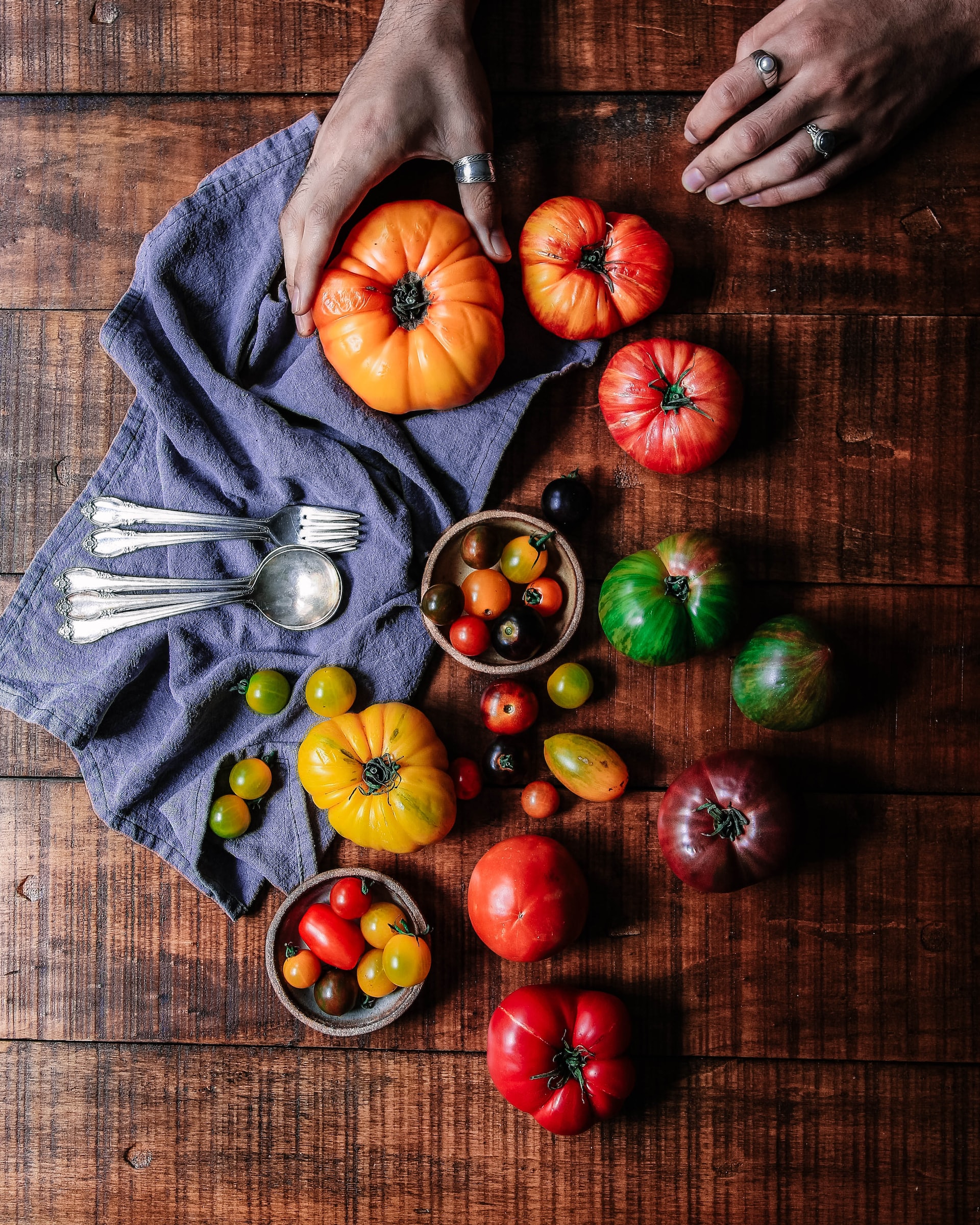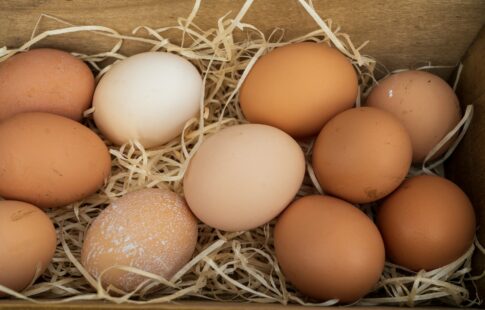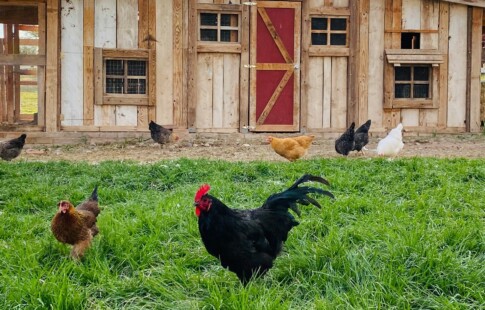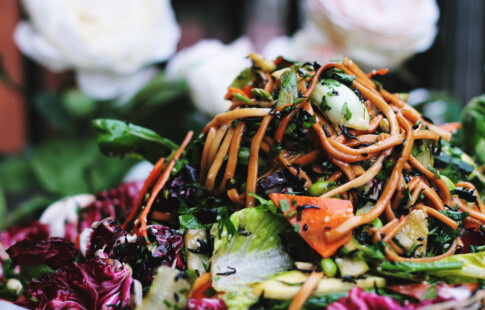
Pros and Cons of Heirloom Tomatoes
We are reader-supported. When you buy through links on our site, we may earn affiliate commission.
With monikers like Black Krim, Green Zebra, Three Sisters and Banana Legs, you could be forgiven for thinking the names of heirloom tomatoes belonged to a band lineup. The roots of these heritage vegetables run deep — some of them originated as early as the 1700s, and gardeners are still enjoying the fruits of our ancestors’ labor some 300 years later.
What Are Heirloom Plants?
Modern farming began around World War II. Heirloom crops, also known as heritage crops, are cultivars of plants that farmers began growing before the advent of industrial agriculture.
The Dawn of Industrialization
After the invention of tractors, modern chemicals and genetic engineering, farmers started planting a smaller variety of fruits and vegetables on larger tracts of land. Although this practice has revolutionized our ability to feed the world’s burgeoning population, present-day agriculture relies heavily on monocropped planting operations that use heavy machinery to do most of the work.
Combine harvesters, for example, work best on fields with only one type of crop. Uniformity allows consistency when spraying pesticides or coordinating watering schedules on a massive scale. The downside is a massive loss of genetic diversity.
Endless Variety
There are around 7,500 cultivars of apples in the world, but the United States only grows around 1.33% of them for commercial sale. That’s a lot of flavors that US consumers are missing out on. And with 97% of American agriculture revolving around crop production, there’s a lot of room for growth.
It’s not just different tastes that heirloom crops bring to the table, but also resistance to different diseases and pests. A field planted with only one variety of tomato — such as the Sun Gold, the most common cherry tomato in North America — is susceptible to complete decimation by one plague of insects or prolonged drought.
In contrast, a field with several varieties of heirloom tomatoes will have a unique pest- and disease-resistance profile due to genetic diversity. Individual heirloom cultivars may have lower disease resistance than hybrids, but planting a diversified field of crops makes it statistically more likely that some of them will survive.
Open Pollination
Another unique trait of heirloom plants is how they’re pollinated. Rather than directly intervening in pollination, farmers let insects, birds and the wind do the job, a process called open pollination. The result is that natural selection is partly responsible for the next generation of seeds.
Things to Know About Heirloom Tomatoes
Feeling inspired to start a garden or head to the local farmers market? Here’s what’s unique about heirloom tomatoes compared to their mass-produced counterparts.
- They’re More Flavorful
Whether you want sweet, tart, acidic or savory, heirloom tomatoes deliver. After all, there are over 10,000 named cultivars of tomatoes, with most of them being heritage varieties. If you can’t find one you like, maybe you just don’t like tomatoes!
The aptly named beefsteak tomato is firm, meaty and juicy. Cherokee Purples have a smoky, rich, acidic flavor, while the tiny Riesentraube is extra sweet. There truly is something for everyone.
- They May Have More Beta-Carotene
Unlike commercially grown tomatoes, farmers pick heirloom fruits at the peak of ripeness. One study found that fully ripe Red Rose heirloom tomatoes have higher levels of beta-carotene, which your body converts into vitamin A, compared to tomatoes picked before ripening. Vitamin A — also called retinol — is essential for maintaining eyesight and healthy skin.
- They Can Be Pricey
A pound of heritage tomatoes will run you about $3 to $5. A pound of store-bought tomatoes is roughly half the price. Still, buying tomatoes at a farmers market ensures the gardener who grew them gets all the profit, whereas buying commercially grown tomatoes means the store gets a sizeable portion of the funds. Plus, it’s worth it for the taste.
- Their Fruit Doesn’t Last Long
Hurry up and eat — heirloom tomatoes have a notoriously short shelf life. Depending on the cultivar, they may last between one to seven days in the fridge. That’s a much smaller window for making homemade salsa than you’d get with storebought tomatoes, which often last up to two weeks if you keep them cool.
- They’re Seasonally Available
Tomatoes are hot-weather plants. You can usually find heirloom tomatoes only between mid-summer and early fall unless you live in an exceptionally warm climate. So, why can you buy other tomatoes in the store year-round?
Many grocery stores import fruits and vegetables from warmer hemispheres during winter. However, because heirloom tomatoes have a short shelf life and thin skin, they usually can’t make the journey. Farmers also don’t grow them on a commercial scale. That means if you’re lucky enough to eat a heritage tomato, someone living close by probably grew it.
- They Breed True
When you plant an heirloom tomato seed, you know exactly what you’re getting because they breed true. To illustrate what that means, imagine breeding Siamese cats. All the kittens will have that distinctive white body, gray paws and blue eyes. You won’t get a random black kitten in the mix. Because people have been inbreeding Siamese cats for decades, there are few genetic surprises.
Many commercially grown plants are F1 hybrids, meaning they have characteristics from two genetically different parents. You can’t be sure which parent plant an F1 seedling will take after. Heirloom seeds have been inbred for so many years that you know exactly what you’re getting. Don’t worry — inbreeding is extremely common in plants, and it doesn’t cause the same problems as it does in animals.
- They Might Not Look Perfect
Heirloom crops come in a wider array of colors, shapes and sizes than commercially grown plants. Farmers also haven’t bred them for their appearance, but rather for their taste. That means you might end up with some funky-looking tomatoes! It’s OK if they aren’t perfectly round or uniform in color, though, because variety is what makes them so great.
- They Preserve History
Over fifty years ago, someone enjoyed the exact same flavor you’re experiencing from a heritage tomato. Heirloom crops often have qualities that make them uniquely suited to the climate in which they originated. That can give you a glimpse of what life was like for the person who first grew the plant.
An heirloom tomato plant from Texas, for example, might thrive in intense heat. Someone chose to breed that tomato because it was hot where they lived, and they selected it as the best one to pass down for generations.
Back to Our Roots
As people spend more time at home and cultivate an appreciation for healthy, eco-friendly food, heirloom tomatoes are growing in popularity. In the words of songwriter Guy Clark, there are “only two things that money can’t buy — that’s true love and homegrown tomatoes.”
Summer can’t come fast enough.
Share on
Like what you read? Join other Environment.co readers!
Get the latest updates on our planet by subscribing to the Environment.co newsletter!
About the author
Rachel Lark
Rachel serves as the Assistant Editor of Environment.co. A true foodie and activist at heart, she loves covering topics ranging from veganism to off grid living.





